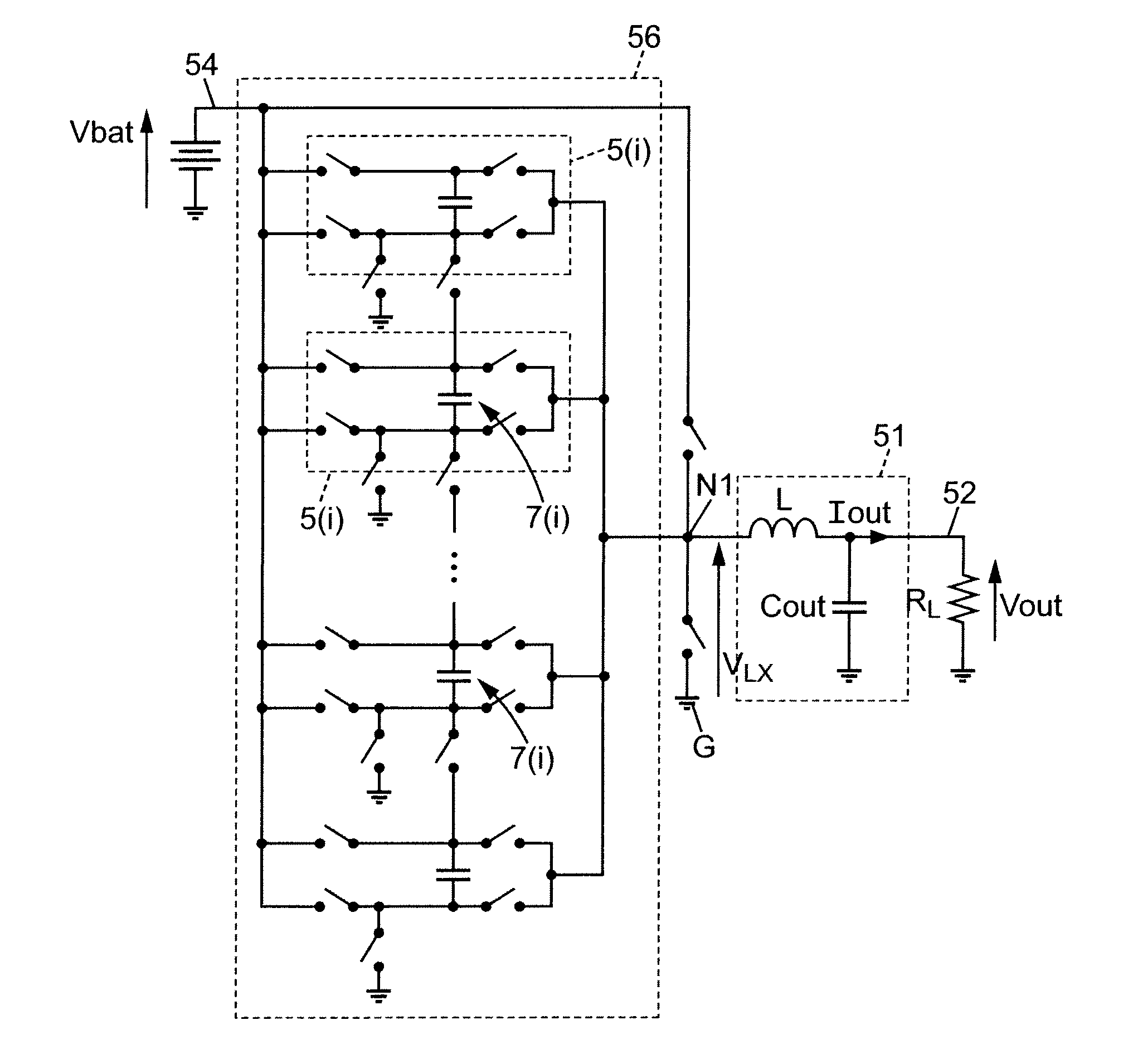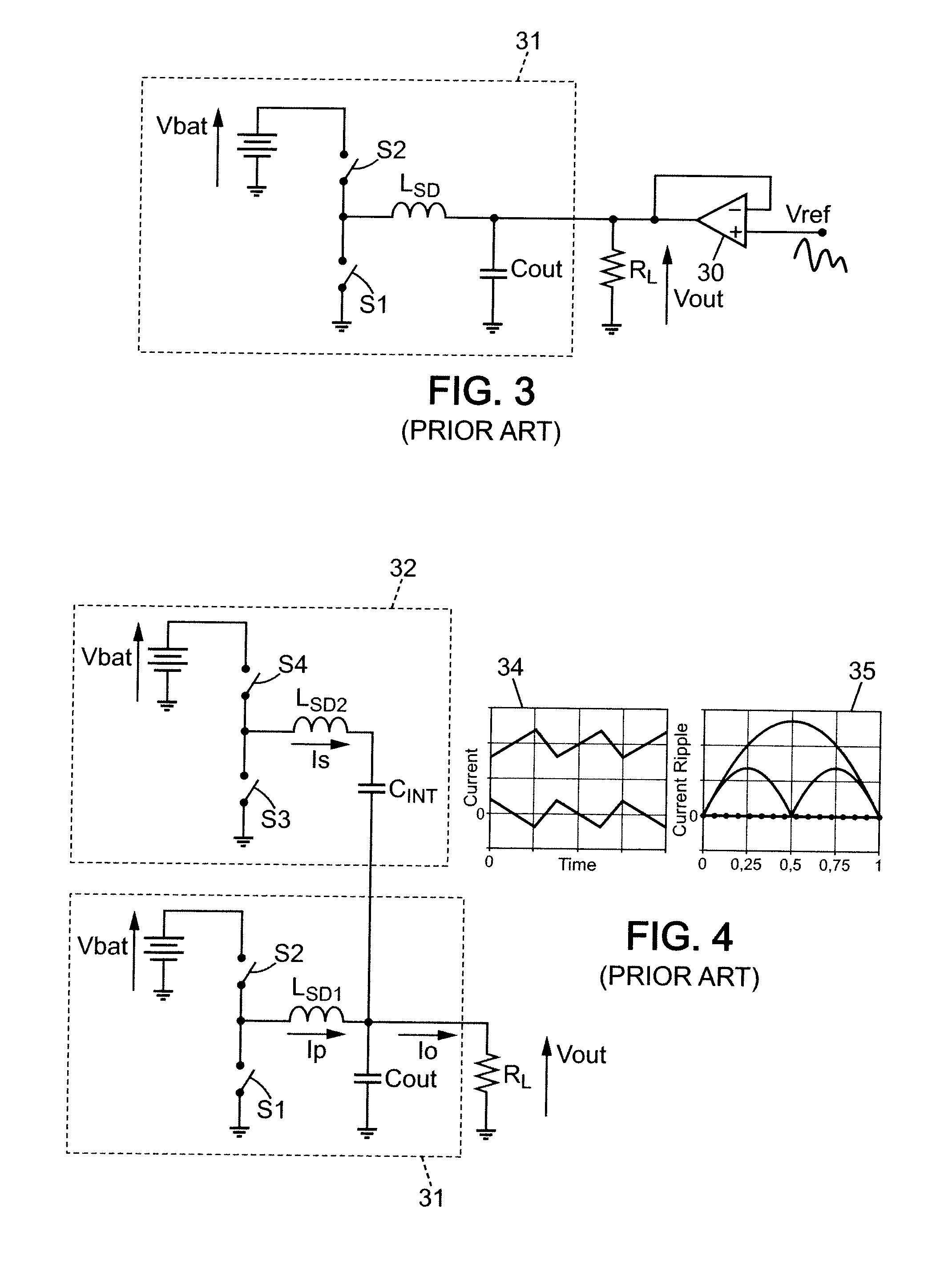Low Ripple Step-Up/Step-Down Converter
a converter and step-down technology, applied in the direction of dc-dc conversion, power conversion systems, instruments, etc., can solve the problems of high frequency, affecting the output voltage of rf signals, and not being suitable for rf applications wherein the output voltage is amplitude modulated, etc., to achieve low ripple, reduce the effect of ripple and high bandwidth
- Summary
- Abstract
- Description
- Claims
- Application Information
AI Technical Summary
Benefits of technology
Problems solved by technology
Method used
Image
Examples
first embodiment
of a Multilevel Charge Pump:
[0085]Referring to FIGS. 5A to 5E there is shown therein a schematic view of an embodiment of a multilevel charge pump according to the invention.
[0086]FIG. 5A illustrates a global schematic view of the charge pump that represents every connection with switches. FIG. 5B to 5E illustrates schematics of the charge pump in different modes of operation, and as such, neither the interrupted connections nor the switches are represented.
[0087]The multilevel charge pump 56 comprises an input terminal 54 adapted to receive an input signal having an input voltage Vbat and an output terminal 52 of the charge pump adapted to be connected to a first circuit node N1, and to output an intermediate output voltage VLX, converted from the input voltage Vbat, at the first circuit node N1 (FIG. 5A). The charge pump comprises further a main module connected between the input terminal and the output terminal of the charge pump.
[0088]The main module 56′, the input terminal 54 a...
PUM
 Login to View More
Login to View More Abstract
Description
Claims
Application Information
 Login to View More
Login to View More - R&D
- Intellectual Property
- Life Sciences
- Materials
- Tech Scout
- Unparalleled Data Quality
- Higher Quality Content
- 60% Fewer Hallucinations
Browse by: Latest US Patents, China's latest patents, Technical Efficacy Thesaurus, Application Domain, Technology Topic, Popular Technical Reports.
© 2025 PatSnap. All rights reserved.Legal|Privacy policy|Modern Slavery Act Transparency Statement|Sitemap|About US| Contact US: help@patsnap.com



